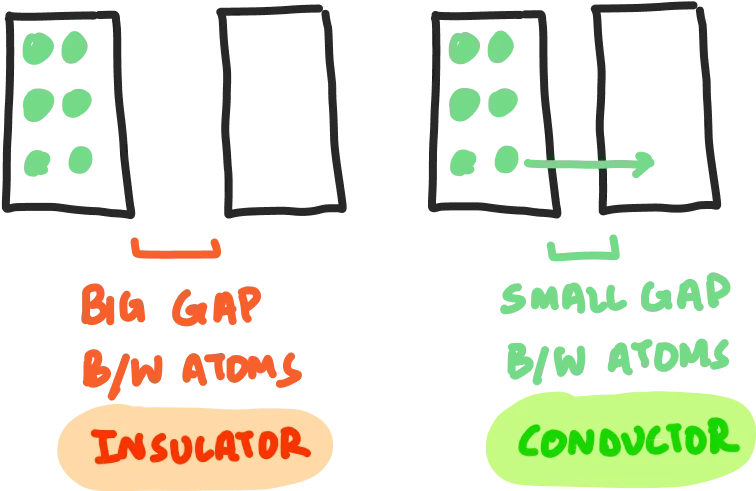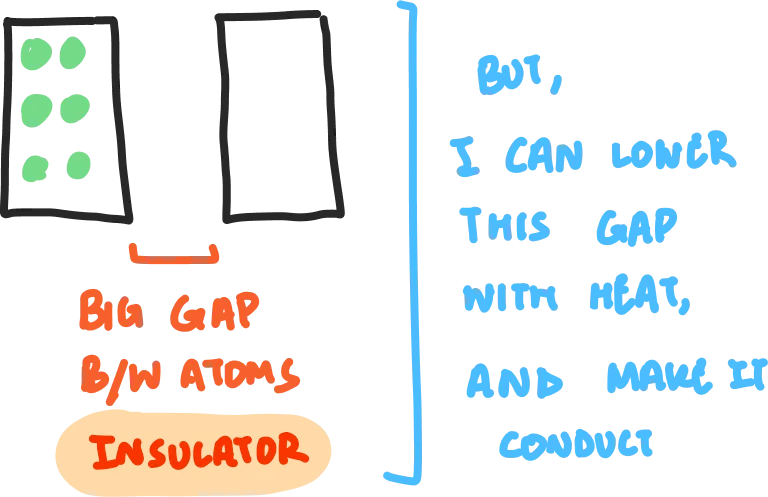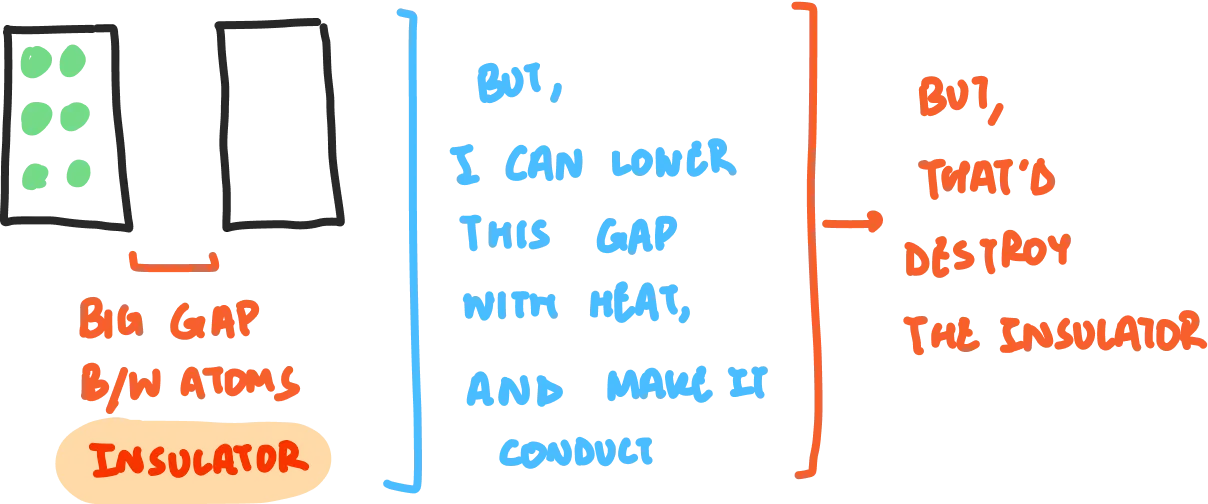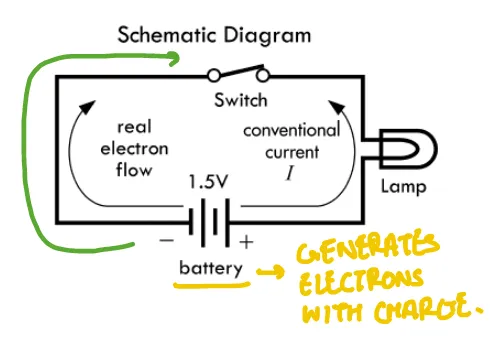tom suggested this, and i found it to be a fantastic in-depth explanation of concepts. the full book is linked below.
understood that electric circuits are made up of certain ‘types’ of circuits: discrete passive (simple circuits), discrete active (made from semiconductor materials, capable of changing states), i/o devices, analog (varying degrees of voltage) & digital (0s, 1s) ics (many discrete circuits on a chip of silicon), and microcontrollers: a collection of many of the previously stated components.
semiconductors:
difference between insulators & conductors.

but, this gap in an insulator can be lowered with heat, making it conductive:

but that’d destroy the original material.

so, they print transistors using photolithography (capable of making a piece of insulated material (such as silicon) conductive, by passing an electrical charge into it). therefore, a semiconductor can turn on / off (and, therefore, send many different kinds of signals).

that’s beautiful.
saw circuit lab.
transient circuits are circuits where sudden changes in state are encountered.
understood that it is actually the negative electrons that move in a circuit, towards areas of higher potential. but, because of earlier stated observations, the conventional current flow is determined to be opposite.

learnt more about voltage (written in electricity).
simply put, when electromotive force (emf) is applied to conductors (different between potentials), negative electrons flow to positive points.